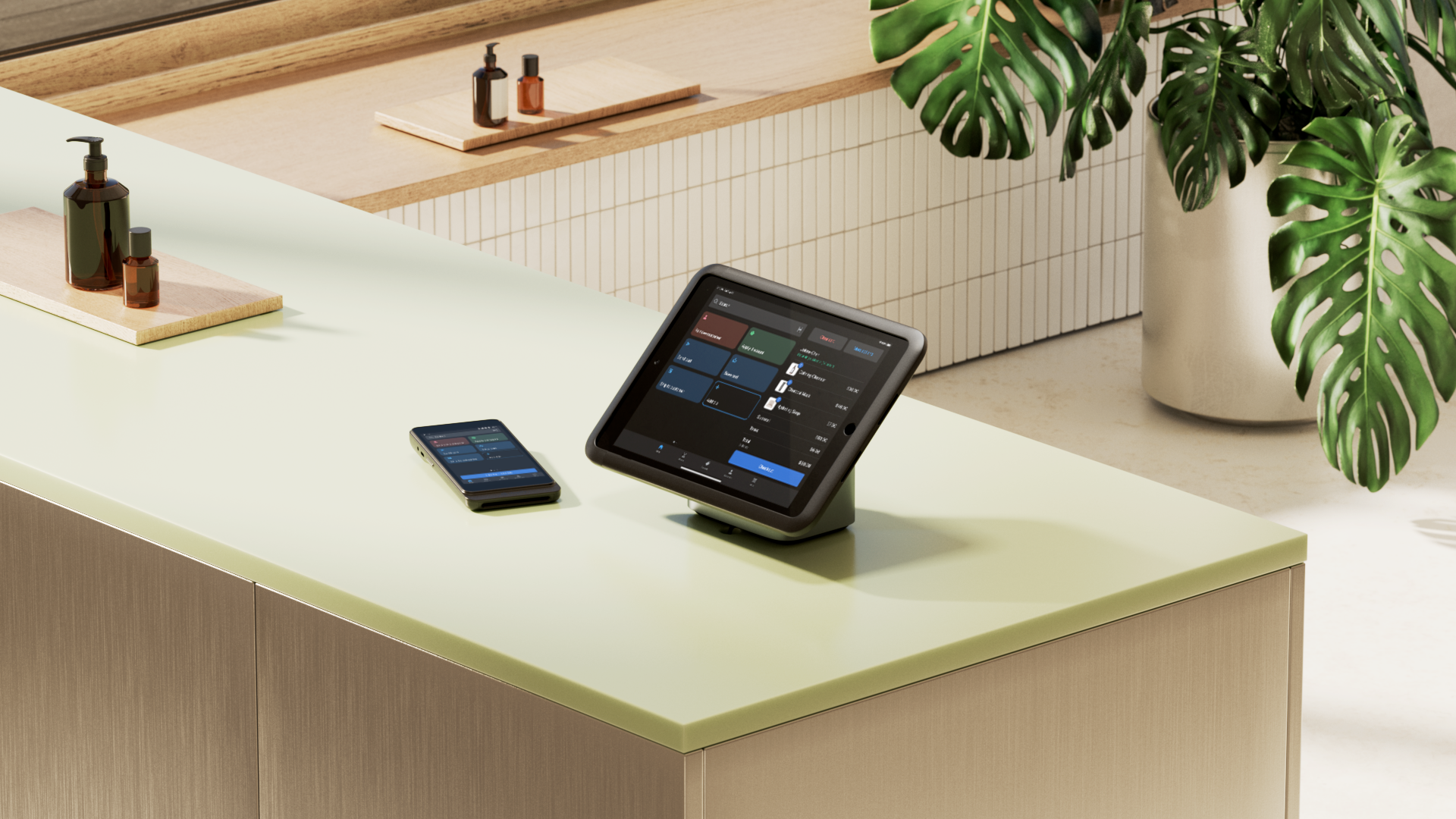In 2023, polyester, cotton, and manmade cellulosic fibers (MMCFs) were the three most widely produced materials, according to the Textile Exchange. The MMCF category includes fabrics made from viscose rayon fibers, such as lyocell, modal, acetate, and cupro.
Viscose rayon fabrics accounted for 6%—or 7.9 million tons—of global fiber production in 2023. Demand for viscose fabric is on the rise thanks to its affordability and versatility. Learn more about different types of rayon and the viscose manufacturing process.
What is viscose?
Viscose is both a fiber and a fabric. Viscose fiber, also known as viscose rayon or rayon, is derived from plant-based cellulose, which is a complex carbohydrate that gives plant cell walls their structure. Common sources of cellulose include natural wood pulp from eucalyptus, pine, or beech, and similar pulp made from other woody plants, like bamboo. Viscose fibers are the base of common fabrics like modal, rayon, lyocell, acetate, and cupro.
Viscose is also the name of a specific fabric woven from viscose rayon fibers. The eponymous viscose fabric has a smooth texture and a soft sheen, and it is often used as artificial silk.
Although it’s made from natural materials, viscose is a semi-synthetic fiber. Purely natural fibers, like wool and cotton, are processed into fabric without chemical modification. To make wool, for example, you simply shear a sheep, clean the material, and spin the yarn. Viscose rayon manufacturing is significantly more involved. Extracting cellulose from natural wood pulp requires extensive chemical processing.
Open-loop vs. closed-loop viscose production
There are two primary viscose rayon production methods: open-loop and closed-loop. These techniques achieve similar results, but key differences in the production process affect sustainability:
Open-loop production
Open-loop production dates back to the early 20th century. It was used to create the first commercially available viscose fabrics. This process uses harsh chemicals like carbon disulfide and sodium hydroxide to extract and refine cellulose fibers. Disposing of these substances after the production process can contribute to pollution. Contacting or inhaling chemicals like carbon disulfide and sodium hydroxide can cause tissue and nerve damage.
Closed-loop production
Closed-loop production is a modern technique that reduces waste by reclaiming materials after manufacturing. With proper execution, this viscose production process can capture and reuse up to 95% of the chemicals used in production. Modal rayon and lyocell both use closed-loop production. Closed-loop uses more advanced technology and is generally more expensive.
Understanding the viscose production process
Viscose rayon fibers are regenerated cellulose. The viscose manufacturing process involves breaking down raw materials, extracting and dissolving the cellulose, and compressing the resulting pulp to regenerate fibers. These are the basic steps used in open and closed-loop production:
1. Extracting
Rayon manufacturers begin by breaking raw materials, either from trees or a woody plant like bamboo, into chips and processing with water and chemicals to produce wood pulp. This step separates cellulose from other plant materials. Wood pulp moves on to the next stage for closed-loop production. In open-loop processing, refined wood pulp cellulose is then pressed into sheets for further treatment.
2. Dissolving
In a closed-loop production process, wood pulp is combined with N-Methylmorpholine N-oxide (NMMO), a non-toxic solvent, to break down the cellulose fibers. For open-loop processing, pressed sheets undergo a two-step chemical process. First, they’re treated with sodium hydroxide (lye) converted to alkali cellulose. This is converted to cellulose xanthate with the addition of carbon disulfide and then dissolved in a solvent bath to form a liquid viscose solution.
3. Spinning
The viscose solution is then passed through a metal plate with small holes, known as a spinneret. The process forces filaments together to create regenerated cellulose fibers. Open-loop viscose production uses a chemical bath, typically sulfuric acid, to solidify freshly extruded fibers and produce rayon. Closed-loop processing uses a water bath or air chamber to treat fibers.
4. Finishing
Rayon filaments are washed, bleached, and dyed, and spun into yarn or fabric. At this stage, closed-loop production treats excess liquid to reclaim chemicals and reuse them for future production.
Is viscose sustainable?
Not all viscose is created equal in terms of sustainability. In addition to the production process, sourcing decisions also play a big role in determining the fabric’s ultimate environmental impact. Evaluating sustainability requires an end-to-end examination of the entire production process—from raw material through the final product. This involves considering material origin, production efficiency, and resulting waste.
Some viscose production is linked to deforestation. Removing old-growth trees or harvesting endangered forests to manufacture viscose reduces biodiversity and can put native animal populations at risk. For a more sustainable viscose, look for FSC-certified (Forest Stewardship Council) source materials. This certification indicates that organic materials have been grown and harvested responsibly.
Open-loop viscose manufacturing sites generate significant chemical and water waste. If chemicals escape, they can cause both health and environmental harm. Open-loop production has been linked to contaminated bodies of water in China, India, and Indonesia. Closed-loop processing reduces waste associated with manufacturing rayon by reusing reclaimed chemicals.
You can create more sustainable products by using viscose sourced from sustainably managed forests and produced in a closed-loop system. Sustainably produced viscose has less environmental impact than conventionally grown cotton, for example, as cotton production is more water-intensive and uses harmful pesticides such as Methyl parathion and Monocrotophos. However, conventional cotton is more sustainable than open-loop viscose. Cellulose-derived viscose fabric is more sustainable than fully synthetic materials like polyester.
Viscose fibers are also touted as being biodegradable. Treating with flame-retardant chemicals can interfere with this process, but many viscose rayon fabrics can decompose naturally without contaminating soil. However, the fabric doesn’t biodegrade in landfills, which is where most clothing waste ends up.
Advantages of using viscose rayon
Viscose offers a middle ground between synthetic and natural fabrics. These are some of the reasons that viscose is popular with fashion designers and consumers:
-
Affordable. Rayon fabrics are less expensive than natural materials. Viscose can help brands keep their items affordable and/or maintain strong profit margins.
-
Versatile. Depending on how they are brushed and woven, viscose rayon fabrics can have a light sheen or matte finish. Silky materials are ideal for formal dresses, while heavier fabrics are a common choice for structured blazers and menswear.
-
Comfortable. Rayon is a soft, breathable fabric. Viscose fibers have natural moisture-wicking properties that draw sweat away from skin and help keep wearers comfortable in warm environments.
-
Absorbs dye. Viscose rayon fibers are hydrophilic, meaning they attract water. This property helps them absorb dye effectively, especially in comparison to water-repelling fibers like polyester. Rayon fabrics are available in a wide range of saturated, vibrant colors.
-
Drapes well. In clothing design, “drape” describes the way fabric moves and falls across the body. Viscose fabrics drape beautifully; they’re well-suited to flowing garments like dresses and skirts.
-
More sustainable than synthetics. Viscose is more sustainable than fully synthetic materials like polyester. When produced from responsibly sourced materials and using a closed-loop process, it’s also more sustainable than conventional cotton.
Disadvantages of using viscose rayon
If longevity and sustainable production are priorities for your clothing brand, viscose might not be the best material.
-
Lacks durability. Rayon fibers snag easily and may pill with frequent wear. Blending viscose with synthetic fibers like nylon or polyester can improve its tensile strength.
-
Prone to water damage. Water can cause aesthetic and structural damage to certain viscose fabrics. Artificial silk and cupro are prone to watermarking and rippling.
-
Difficult care. Viscose wrinkles easily and requires frequent ironing. Many types of rayon aren’t machine washable—they call for dry cleaning or hand-washing with a mild detergent. Garments may shrink with improper laundering.
-
Environmental concerns. The traditional viscose process generates significant chemical waste. Viscose has also been linked to deforestation, as some manufacturers may use unethical sourcing practices, like harvesting old-growth or endangered forests.
What is viscose fabric FAQ
What is viscose fabric?
Viscose is a semi-synthetic fabric with a smooth surface and a light sheen. Sometimes referred to as artificial silk, viscose is often used as a low-cost alternative to natural silk because of its similar texture. Common applications of this versatile fabric by fashion brands include dresses, blouses, skirts, and lingerie.
Is viscose a good quality fabric?
Viscose quality varies depending on the production process. The best viscose fabrics are made from high-quality wood pulp and woven with long, durable fibers that resist breaking. Low-quality viscose may degrade quickly.
What are the disadvantages of viscose fabric?
Viscose fabric is prone to snags and pills. It requires delicate laundering and may shrink with improper care. The viscose production process is resource-intensive and sometimes incorporates toxic chemicals.
Is viscose better than cotton?
Cotton fibers are durable, but rayon is affordable and versatile—the best material depends on your needs. Cotton fabrics like canvas, denim, and woven t-shirt material are durable and machine-washable. Rayon fabrics like modal, viscose, and lyocell aren’t as strong as cotton and often require dry-cleaning. While cotton is always matte, some viscose fabrics have a soft sheen that makes them well-suited to formalwear or lingerie.
Is viscose good for summer?
Yes. Viscose fabric is lightweight and breathable. Air flow and moisture-wicking properties help reduce body oils and sweat to help keep the wearer cool.







